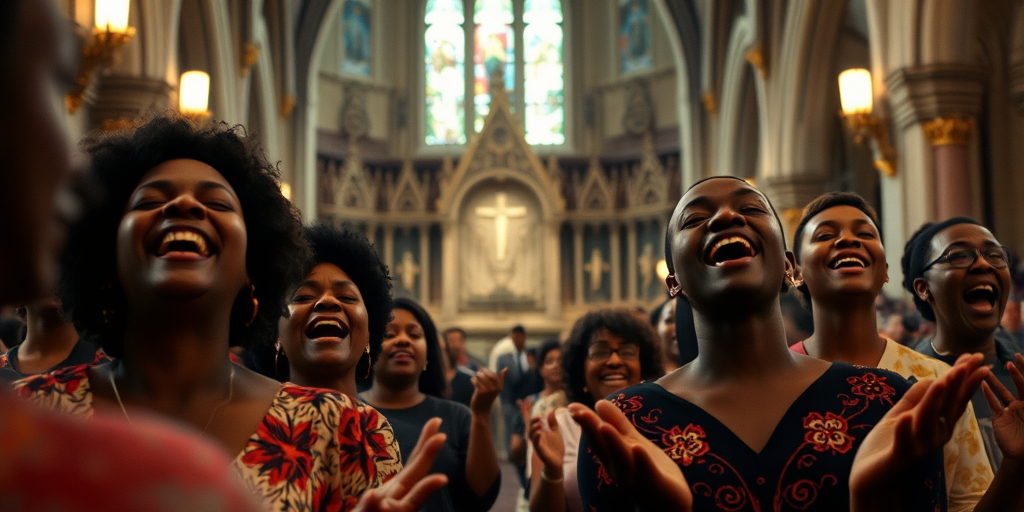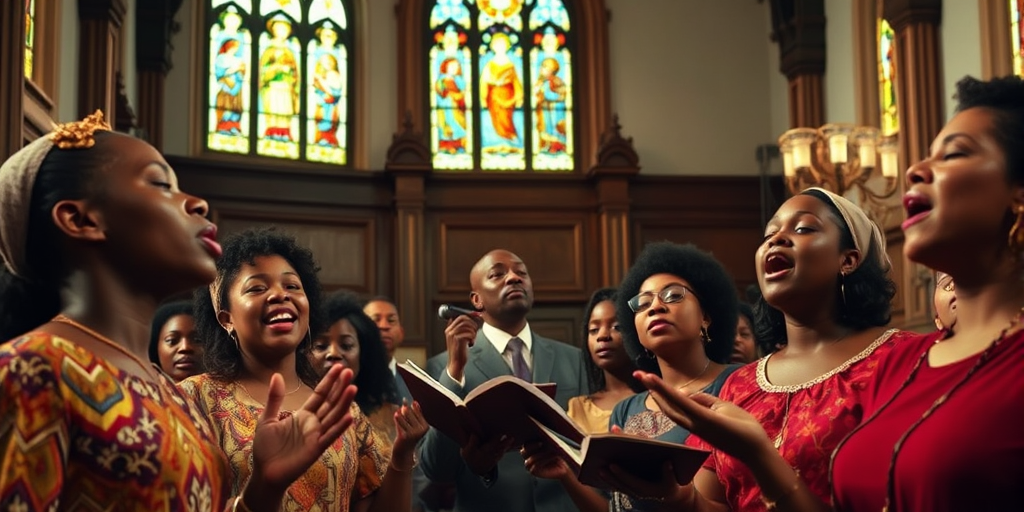Have you ever wondered if music could reshape a community’s destiny? The relationship between gospel music and Black church culture stands as a testament to resilience and transformative power. Rooted in the struggle for survival, these sacred songs provided hope during desperate times while forging bonds that defied oppression. Today, they continue to inspire spiritual growth and social change, proving that their evolution shapes both faith and identity. In this post, we explore how historic anthems have ignited unity and empowered communities through every note.
Evolution and Cultural Impact of The Relationship Between Gospel Music and Black Church Culture
Gospel music has undergone concerted tune development over time, blending spiritual traditions with secular musical influences. Our community’s experience in temple ritual ceremonies and worshiphouse hymn evolution reflects a rich history of musical innovation. Integrating elements from blues and jazz, early sacred arrangement shifts have broadened the emotional and cultural appeal of gospel music. Renowned vocalists have shaped this evolution, leaving a lasting imprint on Black church culture.
These musical innovations created a platform for concerted performances that encouraged large-scale congregation participation and collective identity. Performance settings evolved from intimate worship gatherings into expansive temple ritual ceremonies, where every note served a purpose. Influential figures in gospel have led the way in developing concerted tune development that resonates deeply within our community.
- Worshiphouse hymn evolution
- Concerted tune development
- Sacred arrangement shifts
- Temple ritual ceremonies
Our collective experience unites us through a shared legacy built on the resilience of faith and the transformative power of music. As gospel music traversed the boundaries of traditional sacred settings, it embraced the spontaneity of jazz and the soulful melancholy of blues. This blend allowed for renewed expressions of hope, joy, and spiritual endurance in every performance. Audience participation in large choirs has become a hallmark of modern services, reinforcing unity and collective identity. Through these inspiring musical transitions, the relationship between gospel music and Black church culture continues to evolve, reflecting the dynamic interplay of history, faith, and artistic innovation.
Contemporary Reflections on The Relationship Between Gospel Music and Black Church Culture

Contemporary reflections on gospel music within Black church culture reveal a vibrant evolution marked by tradition and innovation. Today, gospel music continues to inspire both spiritual and secular musicians across diverse genres, carrying forward a divine musical heritage that unites generations. Artists integrate modern production techniques while preserving the soulful essence that has long defined gospel sound. This dynamic interplay between old and new fosters intergenerational dialogue, inviting participation from seasoned vocalists and emerging voices alike.
Programs such as PBS for the Arts’ “The Black Church: This is Our Story. This is Our Song” reinforce the ongoing cultural significance of gospel music. These initiatives capture live musical segments and personal narratives from influential figures, providing a platform for authentic reflections on faith, struggle, and artistic expression. Modern renderings of gospel performances incorporate varied audio innovation trends and performance evolution studies, maintaining a balance between divine audio journeys and contemporary expression. Listeners experience both nostalgic hymns and new compositions that adapt traditional themes for today’s settings.
- divine musical heritage
- performance evolution study
- audio innovation trends
- divine audio journeys
The sustained impact of gospel music in modern settings not only fosters community but also inspires transformation. Faith communities continue to use music as a means to express hope and resilience, blending historical roots with exciting new interpretations. Each performance becomes a living testament to a rich legacy that empowers communities to embrace the challenges of contemporary society while staying connected to their enduring cultural identity. Modern gospel expressions steadily continue to evolve, ensuring that every divine note and rhythm reaffirms our collective spiritual journey.
Final Words
In the action, we explored gospel music’s origins from slave spirituals, its blending with blues and jazz, and its profound role in rallying community strength during social movements.
We uncovered how this vibrant sound has shaped the past and continues to influence modern expressions of faith.
Our discussion on The Relationship Between Gospel Music and Black Church Culture reminds us of music’s power to uplift and unite.
Together, we look forward to a future filled with inspiring harmonies and shared musical journeys.
FAQ
Q: What is the historical significance of gospel music in Black church culture?
A: Gospel music emerged from African American spirituals during slavery, serving as both a form of worship and resistance. It provided hope, strengthened community bonds, and became a powerful voice during the civil rights movement.
Q: How did gospel music evolve over time?
A: Gospel music evolved by blending spiritual traditions with blues and jazz elements. Large choirs, congregational participation, and influential vocalists helped shape its development into a distinctive musical genre.
Q: What role did gospel music play in social movements?
A: Gospel music functioned as a catalyst for social change, particularly during the civil rights movement. Songs became anthems of resistance, unity, and empowerment, inspiring activism and community resilience.
Q: How has gospel music influenced other musical genres?
A: Gospel music has profoundly shaped R&B, soul, and contemporary Christian music. Its emotional depth, vocal techniques, and harmonies continue to inspire artists across various musical styles.
Q: What makes gospel music unique in Black church worship?
A: Gospel music combines powerful harmonies, congregational participation, and spiritual storytelling. It creates a communal experience that strengthens faith, builds unity, and celebrates cultural identity.
Q: How is gospel music adapting in contemporary times?
A: Modern gospel music incorporates new musical styles while maintaining its spiritual core. It continues to bridge generations, foster community connections, and inspire both sacred and secular audiences.
